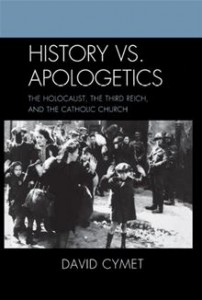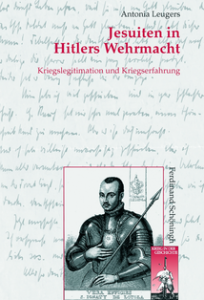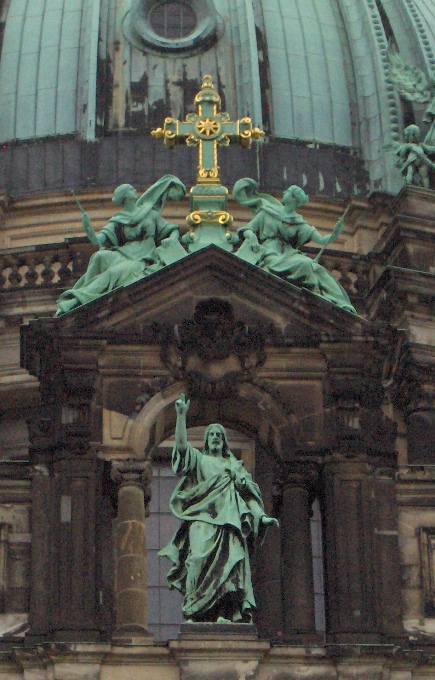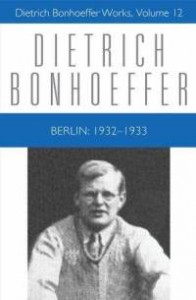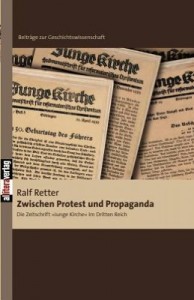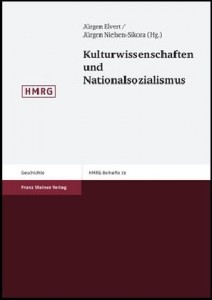ACCH Quarterly Vol. 17, No. 1, March 2011
Review Article: Christianity and Communism in East Germany
Wendy R.Tyndale, Protestants in Communist East Germany. In the storm of the world (Farnham,U.K.: Ashgate Publishing, 2010), 189 Pp. ISBN 978-1409-4061-05.
Bernd Schaefer, East German State and the Catholic Church 1945-1989, translated by Jonathan Skolnik and Patricia C.Sutcliffe, Studies in German History: v. 11 (New York and Oxford: Berghahn Books, 2010), 303 Pp. ISBN 978-1-84545-737-2.
Katharina Kunter, Erföllte Hoffnungen und zerbrochene Träume. Evangelische Kirchen in Deutschland im Spannungsfeld von Demokratie und Sozialismus (1980-1993), Arbeiten zur Kirchlichen Zeitgeschichte, Reihe B: Darstellungen: Bd 46 (Göttingen: Vandenhoeck & Ruprecht, 2006), 346 Pp. ISBN13: 978-3-525-55745-7.
Hedwig Richter, Pietismus im Sozialismus. Die Herrnhuter Brüdergemeine in der DDR, Kritische Studien zur Geschichtswissenschaft, Bd 186 (Göttingen: Vandenhoeck & Ruprecht, 2009), 400 Pp. ISBN 978-3-525-37007-0.
By John S. Conway, University of British Columbia
In the twenty years since the overthrow of the Communist empires in Eastern Europe, a remarkable number of books have been written about the fate and fortunes of the Christian churches and communities during the period of totalitarian control in this region. This is particularly the case for the churches of the German Democratic Republic, or East Germany as it is generally known, the heartland of Martin Luther’s ministry and witness. This historic legacy made East Germany the only Communist-controlled country where the majority of the population – at least nominally – was Protestant. The resulting clashes and tensions between Christianity and Communism are at the centre of these recent studies, most of which are scholarly in tone and diligently researched. They describe a highly significant chapter of modern European church history.
Several reasons can be given for this noteworthy interest inEast Germany’s church developments, which has attracted the attention of scholars not only inGermany, but also inBritain, North America andAustralia. First, the sudden collapse of the Communist regime at the end of 1989 made available an unprecedented corpus of official documentation, including the highly revealing records of the Stasi,East Germany’s secret police. In most other jurisdictions, such records are withheld in secrecy for at least a period of thirty years. But inEast Germany, they were all available. Furthermore they contained shocking – and to many people personally painful – revelations. There was an urgent need to have competent scholars assess the damage.
The second motive behind these writings was undoubtedly the wider need somehow to come to terms with the impact of the decades of Communist hegemony, a form of Vergangenheitsbewältigung for the whole society. Both personally and politically, the churches, especially their leaders, now found their conduct scrutinized and criticized. They sought scholarly help to portray the series of crises and dilemmas with which they had been confronted, or the extent of political manipulation and oppression they had suffered at the hands of the Communist rulers. In the case of some, they had to explain what – in the aftermath – looked like capitulation, or a craven failure to uphold the Gospel imperative. This need for such a critical evaluation of the churches’ conduct was all the more vital because of the fact that it had all happened before, fifty years earlier. The catastrophic overthrow of the Nazi regime in 1945 had led to a full-scale review of the churches’ role under Hitler’s sway. The lessons allegedly learned were demonstrably a major influence on the churches’ policies under Communism. But now all had to be reconsidered and re-assessed.
A third reason was the clear need for scholars to chart the way forward for the churches in a post-Communist world. Having been for forty years constantly assailed with propaganda and police measures designed to cajole or enforce their submission, the churches now needed to recover their own priorities, and to rethink – once again – their whole relationship with the state, which had been so disastrously compromised during both the Nazi and the Communist eras. Inherent in all such studies has been the deeper problem of how the Christian churches – for better or for worse – have confronted the evils of twentieth century totalitarianism. The findings of these scholars have not always been comforting. There is too much evidence of both complicity and timidity. But yet, in 1989, the contribution of the churches in bringing to an end the years of tyranny and misrule cannot be doubted. The broad spectrum of responses from resistance to compromise is the subject of these books now under review.
 Wendy Tyndale is an experienced British journalist with wide international contacts. Her survey of the Protestant churches in East Germany is enhanced by the lengthy and well-informed interviews she conducted with leading church members, some of whom held high office during the years of Communist rule. She begins with recapturing the dramatic events of October and November 1989 when the mass gatherings of church supporters in Leipzig, Dresden and Magdeburg at their weekly prayer meetings built up unstoppable but peaceful waves of protest which eventually brought about the collapse of the regime. She rightly claims that the initiative came from those in the churches brave enough to defy the Communist authorities. Their fears that any such public demonstrations might lead to bloodshed were well-founded. The East German police state had no compunction about taking repressive measures against dissidents. Nevertheless the church leaders did not climb down. They called on their supporters to take part in peaceful marches around the city streets, when they carried candles not guns. Their advice was heeded. No violence ensued. This unique and exemplary commitment to non-violence was sufficient. Within a month, the Communist rule was overthrown. Tyndale’s book seeks to explain to English-speaking readers how this was made possible.
Wendy Tyndale is an experienced British journalist with wide international contacts. Her survey of the Protestant churches in East Germany is enhanced by the lengthy and well-informed interviews she conducted with leading church members, some of whom held high office during the years of Communist rule. She begins with recapturing the dramatic events of October and November 1989 when the mass gatherings of church supporters in Leipzig, Dresden and Magdeburg at their weekly prayer meetings built up unstoppable but peaceful waves of protest which eventually brought about the collapse of the regime. She rightly claims that the initiative came from those in the churches brave enough to defy the Communist authorities. Their fears that any such public demonstrations might lead to bloodshed were well-founded. The East German police state had no compunction about taking repressive measures against dissidents. Nevertheless the church leaders did not climb down. They called on their supporters to take part in peaceful marches around the city streets, when they carried candles not guns. Their advice was heeded. No violence ensued. This unique and exemplary commitment to non-violence was sufficient. Within a month, the Communist rule was overthrown. Tyndale’s book seeks to explain to English-speaking readers how this was made possible.
After 1945 the Cold War conflicts led to the division of Germany between two irreconcilable political systems.East Germany was to become controlled by the Socialist Unity Party, led by hard-line Marxists. Their ideology called for the imposition of ‘scientific socialism’ with the eventual eradication of the churches as symbols of the feudal-bourgeois past. In addition, the churches’ widespread complicity with the former Nazi regime made them vulnerable. The conservative and nationalist attitudes of most churchmen led to virulent accusations that they were agents of western imperialism. The state-run propaganda apparatus was continuously mobilized to denounce and denigrate the churches, while atheistic scientific socialism was made the sole guiding theory of the state. The first years of Communist rule were therefore particularly challenging. In the 1950s the pattern of state repression of church activities became firmly established. Bishops and church leaders were attacked in the press, church institutions closed down, youth work curtailed or forbidden and strict limits placed on church activities. On the other hand, as with the Nazis, the Communists did not seek to prevent or purge church services. The fiercest battles came over the state’s decree that all young people had to take part in the Youth Dedication Ceremony – a socialist atheistic attempt claim total loyalty to the Party and the Communist system. The churches resisted but in the end were forced to yield when this rite became a pre-requisite for all higher education beyond elementary school. Many loyal church members fled to the more sympathetic setting of West Germany until this avenue of escape was closed by the building of the Berlin Wall in 1961.
For those who remained, the ideas of the anti-Nazi theologians Dietrich Bonhoeffer and Karl Barth became largely influential. Both called on Christians to exercise their witness in the places where God had called them to live, and to gain strength enough to resist the oppression and discrimination they would have to face. At the same time, Barth, in a famous letter fromSwitzerlandin 1958, counselled East German Christians against any knee-jerk anti-communism, let alone identifying Christianity with the capitalist west. In her interviews with church leaders, Tyndale gained the impression that these teachings provided a theological life-line in the embattled churches Despite all the restrictions and discrimination they endured, despite the loss of their former privileges and social status, these churchmen struggled to believe in a more positive future. Their mission was, as Bonhoeffer had suggested, to become “the church for others”, a serving church humbly accepting its exclusion from the nation’s power base. But at the same time these church leaders sought to avoid retreating into a private and pietistic religious sphere. By the 1970s they had adopted a platform calling for a reformed socialist system, liberated from the oppressive dictatorship of the Communist police state with its ever increasing surveillance carried out by the notorious Stasi. Tyndale is obviously impressed by such optimism. She is therefore careful to note that the authors of the 1989 prayer meetings and demonstrations were far more committed to reforming rather than to replacing the tyrannical Communist system. For years the churches had trodden the perilously narrow path between opposition to the state and opportunistic accommodation to it. But in 1989, amid all the tensions and excitements, they still adhered to the idea that the East German state could be changed for the better. Their aim was to secure more human freedom and dignity, more tolerance and openness of expression, but within a remade socialist state. Tyndale expresses her strong support for such ideas.
But it was not to be. Within a year after the fall of Communism, East Germany ceased to exist, and all its institutions, including the churches, were subsumed into the wider West German framework. Tyndale gives an excellent analysis of how the East German church tried to come to terms with this unfortunate legacy. To many of her interviewees, this integration and loss of their own autonomy was a regrettable step. Happiness had come, but at a high price, including the lost dreams of these church leaders. Inevitably they were hurt by the triumphalism of their new West German colleagues. In vain did they call for a period of grief and re-evaluation of the past. But the West German churches had the money. They called the tune. So the theological insights which had been the hall-marks of what was called “Church within Socialism” were abandoned. Little credit was given to the churches’ stand against the former dictatorship. Instead all too much attention was paid to those few clergy who had served the Stasi as “unofficial collaborators”. Too often, the whole attempt to find a credible Christian discipleship in a Communist world was dismissed as a delusion now relegated to the dust-bins of church history. But Tyndale seems to share the nostalgia of her now aging correspondents for this brave but bygone episode, as well as the wishful thinking about the nature of their situation which was characteristic of these high-minded churchmen. Their vision for the church’s future may have turned out to be only a dream, but the controversial issues they raised for debate, she believes, still remain as vital challenges to the church today. We can therefore be grateful to Wendy Tyndale for her sympathetic account of how these church leaders lived out the tensions between Communist ideology and Christian faith.
II
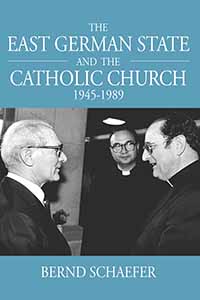 Bernd Schaefer’s account of the Catholics in East Germany was first published in German in 1998 in a somewhat longer version. It makes a valuable and complementary study to Wendy Tyndale’s. Both Catholics and Protestants suffered the same ideologically-based onslaught from their Communist rulers in the German Democratic Republic. Both were attacked as outdated survivals of a feudal era, now to be replaced by the brave new world of “Socialist Man.” Both had their institutions repressed, their communications censored, their youth work curtailed, their social outreach diminished, and were made victims of the ever watchful secret police, the Stasi. But there were also significant differences. For one thing, the Catholics were a small minority in this Protestant heartland. Ever since the unification of the country in 1871, Catholics had been disadvantaged. Bismarck’s Kulturkampf had left deep wounds. Only a few years later, Catholics were subjected to further persecution at the hands of Nazi radicals, such as Goebbels and Himmler. After 1945, they once again were called to endure fresh waves of persecution and obliged to seek new ways to defend their autonomy. It is hardly surprising that, during the forty years of Communist rule, the Catholics’ stance was a defensive one. They were largely cut off from their fellow Catholics in West Germany, and, after the erection of the Berlin Wall, virtually isolated from all outside contacts. Little was known about their institutional life, and even less published. Not until 1989 did a wealth of archival records and living witnesses become available to scholars. Schaefer in fact, served for several years in the 1990s as secretary to the East German Catholic Church’s commission investigating the nefarious activities of the Stasi and its alleged influence on Catholic life. His assessments are therefore based on his extensive research in both state and church archives.
Bernd Schaefer’s account of the Catholics in East Germany was first published in German in 1998 in a somewhat longer version. It makes a valuable and complementary study to Wendy Tyndale’s. Both Catholics and Protestants suffered the same ideologically-based onslaught from their Communist rulers in the German Democratic Republic. Both were attacked as outdated survivals of a feudal era, now to be replaced by the brave new world of “Socialist Man.” Both had their institutions repressed, their communications censored, their youth work curtailed, their social outreach diminished, and were made victims of the ever watchful secret police, the Stasi. But there were also significant differences. For one thing, the Catholics were a small minority in this Protestant heartland. Ever since the unification of the country in 1871, Catholics had been disadvantaged. Bismarck’s Kulturkampf had left deep wounds. Only a few years later, Catholics were subjected to further persecution at the hands of Nazi radicals, such as Goebbels and Himmler. After 1945, they once again were called to endure fresh waves of persecution and obliged to seek new ways to defend their autonomy. It is hardly surprising that, during the forty years of Communist rule, the Catholics’ stance was a defensive one. They were largely cut off from their fellow Catholics in West Germany, and, after the erection of the Berlin Wall, virtually isolated from all outside contacts. Little was known about their institutional life, and even less published. Not until 1989 did a wealth of archival records and living witnesses become available to scholars. Schaefer in fact, served for several years in the 1990s as secretary to the East German Catholic Church’s commission investigating the nefarious activities of the Stasi and its alleged influence on Catholic life. His assessments are therefore based on his extensive research in both state and church archives.
Relations between the East German State and the churches were always one-sided. Even more than had been the case during the Nazi regime, the churches were to be faced continuously with the whole weight of the state’s repressive machinery, and rarely had an opportunity for any initiative of their own devising. Inevitably therefore accounts such as Schaefer’s have to start with a description of the Communists’ strategy and tactics as they came to launch and later to sustain their anti-church campaign. In fact, Schaefer claims, from the earliest days in 1945, the East German rulers quickly developed a two-pronged approach which became a permanent feature of the regime’s Kirchenpolitik. On the one hand, they made use of the repressive and surveillance tactics to induce obedience and compliance with their unilateral decrees. On the other hand, they also practised a policy of conciliation, attempting to lure the churches, and particularly their leaders, into affirming their loyalty to the regime or making public political declarations which could serve the regime’s search for legitimacy both at home and abroad. But the main aim remained to marginalize the churches and finally to hasten their decline.
As the Cold War intensified and the division of Germany into two rival systems became irreversible, so the Communist grip on the eastern half consolidated. The Socialist Unity Party’s hostility led to increased propaganda, administrative intervention and political attacks. From their point of view “political Catholicism” was only a facade “paving the way for German fascism.” For their part, the East German bishops attempted for as long as possible to maintain their links with their counterparts in West Germany. But the reality of Communist control forced the church leaders to come to terms with their political situation, and to abandon their wishful thinking about the prospect of German reunification. Particularly contentious was the status of the Reich Concordat of 1933. The SED regime refused to recognise its validity on the grounds that the GDR was not part of the Reich or that the treaty had been made with the Nazis. But the East German Catholic leaders refused to join with some of the West German bishops in calling for outright confrontation with the Communist regime. Discretion rather than valour became their watchword.
Subsequently the regime intensified its surveillance of the churches in search for proof of espionage. Over the years the network of informers for the Stasi infiltrated the clergy’s ranks and sought compromising information from ordinary church members. But, in Schaefer’s view, at no point were the security services, or their masters the SED, able to steer the Catholic Church to follow their dictates. Catholics in the GDR soon learnt enough about the Stasi’s operations to adopt a strong sense of caution against any intimidation. The Church as a whole retreated into a position of political abstinence, which was maintained until 1989.
After the building of the Berlin Wall in 1961, the Catholic Archbishop, later Cardinal, Bengsch, resided in East Berlin. During his long tenure of office until 1980, the clergy were ordered to refrain from any political statements or commitments. This was his strategy for avoiding political conflicts, preserving the status quo and establishing a long-term modus vivendi with the state. It might not last for a thousand years, but clearly for the foreseeable future there was no alternative. In contrast to the Protestant churches, no Catholic was encouraged to believe that the system could be reformed. Priests were to concentrate on their pastoral duties within the parish walls.
During the 1960s and 1970s, the Communist politicians made strenuous efforts to obtain international recognition for the GDR and support for its foreign policy. Despite the state’s implacable ideological hostility to the Vatican, its officials sought to exploit the wider church’s more favourable attitudes after the Second Vatican Council. Concessions to the East German Catholic churches could be used to gain international support. In the same way, the state’s continual need for hard currency led to a more flexible policy. The West German Catholics’ willingness to give aid to their East German counterparts could be exploited. Indeed soon millions of D-Marks flowed eastwards under these auspices. But neither the state, nor indeed the church, favoured moves towards a more pluralistic society. Both sought to preserve the inconvenient, but acceptable status quo.
By the 1980s these institutional restraints and repressive policies were increasingly repudiated by the younger generation of Catholics. They looked for more positive ways of engaging with the world. Their activity led to increased surveillance by the Stasi. Schaefer makes extensive and insightful use of the secret police records to trace their large-scale attempts to control such dissidence, but, as he shows, these officials were increasingly frustrated by their lack of effective influence. But the Catholic leaders were also hesitant. Any disruption of the status quo might well endanger the internal independence of the East German Catholic identity. The bishops were alarmed at the possible impact of the changes being demanded. They suspected that the enthusiastic initiatives of these younger members were being inspired by similarly-minded Protestant groups.
In Leipzig, Magdeburg and East Berlin, it was these groups who sponsored the prayer meetings and later protest marches which escalated in size month by month. Expectations rose accordingly. There was increasing pressure on the Catholic leaders to abandon their “hibernating stance” with its attitude of political abstinence. From the state’s point of view, such a stance was predictable and therefore acceptable. The officials in the Ministry of Church Affairs, or indeed the Stasi, therefore grew increasingly impotent and frustrated as the church members were less and less ready to be intimidated into obedient silence.
The growing self-confidence of Catholics in the GDR could be seen at the 1987 Dresden rally attended by 100,000 persons. Shortly afterwards, Catholics took part, with GDR Protestants, in an Ecumenical Convocation to debate the wide-ranging subjects of “Peace, Justice and the Integrity of Creation”, as promoted strongly by the World Council of Churches in Geneva. In addition the new Soviet initiatives for perestroika, and the reform processes in Poland and Hungary, only aroused further expectations. Pressure on the Catholic bishops to move on from their ghetto mentality grew steadily. But not until September 1989 did the Bishop of Magdeburg take an initial step to challenge the regime and call for reforms. His sensational pastoral letter was read in all churches, and marked the end of political subordination. But already power had shifted to the streets. The opening of the Berlin Wall on 9 November only confirmed the regime’s collapse. The people had spoken and succeeded. In the aftermath all the Catholic bishops could do was to claim that they had never granted legitimacy to the unlamented Communist state, and hence looked forward to its abolition and eventual reunification with West Germany.
The strength of Schaefer’s study lies in the details he provides outlining the positions of both state and church. His conclusion is that the Communist rulers were obliged to abandon their preconceived ideological prognostications about the church’s decline and disappearance. For its part, the Catholic Church found it necessary to accept its lesser place in society along with the loss of initiative and influence in political affairs. Schaefer points out that this convergence meant that no Catholics in the GDR lost their lives as a result of political persecution. The special position of the GDR saved Catholics from the full force of Stalinist repression. There was even talk in the late 1980s of an official visit by Pope John Paul II. The modus vivendi under which Catholics in the GDR operated was pragmatic, restrictive but liveable. The church’s public activities were to be sure limited by the Stasi’s surveillance and by administrative restrictions. But the Church could continue to exercise its witness within this framework. Schaefer therefore rightly states that, in this unheroic situation, Catholics were able to deal with the rigours of the monotonous socialist society. Some clergy indeed even welcomed the fact that GDR Catholics were sheltered from the permissiveness and materialism of western consumerism. But none regretted the final overthrow of the totalitarian system which they had steadfastly endured for forty years.
III
Katharina Kunter has contributed an excellent study of the churches’ reforming and socio-political initiatives of the 1980s. These were aimed at overcoming the political and strategic stalemate between the western world and the Communist bloc countries Germans on both sides of the Iron Curtain and the Berlin Wall were particularly alarmed at the plans for nuclear rearmament which seemed to herald a further increase in international tension on their territory. The time was ripe for new initiatives, and for more hopeful alternatives. This movement adopted as its slogan: “Justice, Peace and the Integrity of Creation”, and sought to encourage church members to increase their engagement with ethical and peace issues. Calling itself a Conciliar Process, this coterie of visionaries gained the support of such bodies as the World Council of Churches and the Conference of European Churches, and organized a series of ecumenical conferences where their ideals were discussed and strategies adopted for their wider dissemination. This alliance of peace activists, human rights defenders and environmental advocates proved highly advantageous. Their optimistic mood was enormously strengthened, as noted above, by the impact of Gorbachov’s glasnost and perestroika plans.
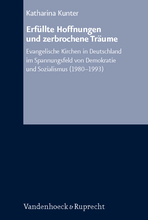 This vision was significantly reflected in the large gathering held in Dresden in February 1988 or the European Ecumenical Assembly held in Basel in May 1989, when for the first time Catholics, Protestants, Orthodox and Anglicans from all parts of Europe met in consultation about the continent’s future goals. Most notable was the presence of numerous activists, some with radical views, whose hopes and dreams were give full rein.
This vision was significantly reflected in the large gathering held in Dresden in February 1988 or the European Ecumenical Assembly held in Basel in May 1989, when for the first time Catholics, Protestants, Orthodox and Anglicans from all parts of Europe met in consultation about the continent’s future goals. Most notable was the presence of numerous activists, some with radical views, whose hopes and dreams were give full rein.
There can be no doubt that such rallies gave heart to the many Protestants and their churches in East Germany who played the most prominent role in the wave of protests and street demonstrations during the summer and fall of 1989. Their bravery evoked waves of sympathy around the world. Eventually they caused the regime’s downfall. Many commentators have in fact called this “the Protestant Revolution” or, because of the absence of any violence, “the velvet revolution.” This challenge to a long-established regime enormously increased the prestige of these beleaguered Protestant institutions and their leaders. They now appeared to have played a heroic part in overthrowing forty years of repression and human rights abuses. Their victory seemed to confirm the validity of the Conciliar Process and its propagation of politicized Christian ethics for a nation in crisis. Expectations were widely held that these church grass roots groups would play an important role in the renewal of society, and foster the necessary institutional changes down to the parish level. Hopes were high that the church leaders would play a significant part in a reformed non-Communist, but still socialist East Germany. And in many places pastors were looked to for such leadership.
But within a year, a very different tone was heard when revelations were made of the collaboration, or even of the complicity, between some of these churchmen and the Stasi. The secret police files contained damning evidence of too many pastors and priests giving confidential information about their parishioners, or about their institution’s internal affairs. The resulting outcry produced a severe backlash against these East German churches, and marred the whole impression of valiant resistance to tyranny.
Katharina Kunter’s study, which includes a six-page summary in English, seeks to evaluate these conflicting accounts. Like Wendy Tyndale, she too describes the “Fulfilled Hopes and Broken Dreams” of Protestants, but in both parts of the divided and later unified country. She then carries the story forward to the mid-1990s so that she can assess the contradictory waves of subsequent historiography which emerged in both East and West Germany during the difficult period of readjustment and reunification. Her analysis of these critical years shows how ambivalent many church people were – and in some cases still are – about the developments in both church and state. She has to admit that, looking at the high ambitions of many of the authors of the Conciliar Process, it must be seen as a failure. After the initial euphoria of 1989 had died down, the majority of church members became occupied with the practical details of earning a living in a broken and disrupted economy. The vision of what the church desired in terms of a renewed society died away, or remained the relatively abstract concern of a small ecclesiastical elite. Their idealistic dreams were not matched with any concrete programme for effective reforms on the spot, either nationally or locally, In the 1990s other political parties or associations sprang up to fulfill the Germans’ desire for democracy, human rights, freedom of movement and a better quality of life. Such developments, as Wendy Tyndale also noted, were a great disappointment to those church leaders who had campaigned for a new vision of Christian responsibility within a reformed socialist society.
But, in Kunter’s view, the contribution of these representatives of this utopian approach consisted in the enriched socio-political discourse within the Protestant churches. They formulated intellectual alternatives, contributing to a pluralism of views and a fruitful dialectic about ethical choices. Her final summary is very apt: “For the majority of Protestants in East Germany the hopes of liberation which they had already articulated in 1988/9 in the conciliar process, with their demands for democracy, the realization of individual human rights and the rule of law were fulfilled. However – for a minority of Protestants in the GDR and the FRG for whom the conciliar process was a way towards a democratic socialism, the end of the GDR was also the breaking of a dream” (p. 282).
IV
Tyndale’s and Kunter’s depictions of the Protestant churches covered their activities at the national level and from the perspective of the leadership. By contrast Hedwig Richter concentrates on one of the smallest church communities in East Germany, the Unity Brethren of Herrnhut, a small town in south-eastern Saxony, close to the Czech border. (In English the Herrnhuters are best known as the Moravian Brethren Church, and will be referred to as such here). In Richter’s view, although this strongly Pietistic group of parishes had at its core no more than two thousand persons, its stalwart witness and the manner in which it survived and surmounted the forty long years of Communist rule, are highly significant features and merit a full examination. Her 300-page study of how this community upheld its traditions and devotion to its Pietist heritage is an exemplary piece of church history, which fully deserves its publication in a distinguished series of historical monographs.
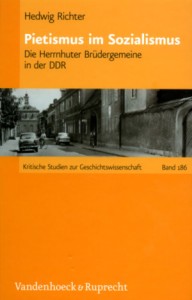 The Moravian Brethren church was founded by an energetic but idiosyncratic aristocrat, Count Zinzendorf in the early eighteenth century. His fervent advocacy of a religion of the heart was based on an intimate fellowship with the Saviour, and became the characteristic of his Pietist following. Their daily prayer meetings and bible-reading fellowships gave an enduring inner strength. But Zinzendorf’s main contribution was in the fields of education and mission. The schools in Herrnhut and district were to become some of the region’s best, attracting support from aristocratic families. Even more remarkable was Zinzendorf’s vision of spreading the Gospel to remote corners of the world such as Africa, Labrador, Surinam or the British American colonies. In time these Moravian missions flourished independently, but still retained their links to Herrnhut. Politically, like other Pietists, the Moravians adhered to the biblical injunction to give allegiance to due authority. When allied to the rise of German nationalism in the subsequent centuries, their patriotic sentiments led to a regrettably uncritical approach to National Socialism.
The Moravian Brethren church was founded by an energetic but idiosyncratic aristocrat, Count Zinzendorf in the early eighteenth century. His fervent advocacy of a religion of the heart was based on an intimate fellowship with the Saviour, and became the characteristic of his Pietist following. Their daily prayer meetings and bible-reading fellowships gave an enduring inner strength. But Zinzendorf’s main contribution was in the fields of education and mission. The schools in Herrnhut and district were to become some of the region’s best, attracting support from aristocratic families. Even more remarkable was Zinzendorf’s vision of spreading the Gospel to remote corners of the world such as Africa, Labrador, Surinam or the British American colonies. In time these Moravian missions flourished independently, but still retained their links to Herrnhut. Politically, like other Pietists, the Moravians adhered to the biblical injunction to give allegiance to due authority. When allied to the rise of German nationalism in the subsequent centuries, their patriotic sentiments led to a regrettably uncritical approach to National Socialism.
In 1945 Herrnhut was overrun and largely destroyed by the advancing Russian forces. Many of its leaders fled westwards and sought refuge among fellow Pietists in Württemberg. Leadership devolved upon members drawn from the working class, who nonetheless upheld devotedly the pietistic life-style of their forebears. The survival of the community was greatly aided by relief supplies from their American brethren, and in turn these contacts helped to restore their ideal of being a world-wide evangelizing community. Relations with the Soviet military administration ran smoothly.
After 1949, however, when the Communist control was established throughout the German Democratic Republic, matters became more critical. From the first, the regime was determined, as Tyndale showed, to bring all aspects of society, including churches, under its total control. The Moravian communities were placed under police observation, their communications censored, and they were the frequent victims of denunciations by jealous neighbours. Harassment by Communist officials became the norm, with refusal of permits for rebuilding their facilities, for their publishing activities or for visits from supporters and relatives abroad. The atmosphere of uncertainty was deliberately maintained by the Communist party at all levels. Blackmail, surveillance and occasional concessions went hand in hand.
Inevitably the Moravian traditions had to be rethought in this new setting. Overseas missions had to be handed over to other branches of the Brotherhood already abroad. The regime’s repressive restrictions curtailed much of their educational activities, which were only heightened by the mandatory requirement that all young people take part in the Communist-controlled Youth Dedication ceremony. Refusal to take part led many of the Moravian children to be excluded from all higher education schools. But the leadership sought to avoid confrontation, and hence adopted an ambivalent attitude towards their new rulers. They still retained their readiness to show a biblically-based loyalty to their political superiors. At the same time, they developed the concept of their prophetic mission to their changed society. As an example of their willingness to serve society in new ways, the Moravians took up an extensive ministry of caring for the handicapped and disadvantaged youth of the region. Such a service earned good marks from the regime, but as Richter rightly points out, had its drawbacks. Such a programme also required constant subsidies from the state, so it was also a means of enforcing the Herrnhuters’ political conformity.
In the event, by the end of the 1950s the Communist authorities also changed their tune. Since these smaller sects constituted no real political danger, they were treated more favourably than the larger churches. They could possibly be lured into giving public support to the Communists’ keen desire for international recognition. Permission to attend international conferences or to receive international visitors could be exploited for the regime’s political purposes. For example, the visit to Herrnhut by high-ranking officials of the World Council of Churches in 1981 was used in this way. Considerable publicity was given to the Council’s Program to Combat Racism on behalf of the oppressed people of Africa and Latin America, which in the Communists’ view fitted in well with their anti-western and anti-capitalist propaganda. Richter is suitably critical of the churches’ failure to apply the same criteria on behalf of the oppressed and marginalized peoples in Communist-controlled lands.
Richter’s account of these developments is drawn from her extensive and insightful use of both church and state archives. She rightly points out that due to the constant pressure to conform, these Herrnhut congregations, like so many other East Germans, became gradually accustomed to their loss of freedom, and were even ready to grant legitimacy to the injustices inflicted on them. Their isolation in the fortress beyond the insurmountable Berlin Wall, and the widespread disillusionment after the suppression of the Prague uprising in 1968, obliged a whole generation to accommodate themselves to this socialist reality, and even to express their support for its ambitious socialist goals. In Richter’s view this stance was remarkable in view of the constant repression of church activities, the attacks on religion especially by teachers and party propagandists, the relentless pressure on young people to take part in the Youth Dedication ceremony, and the marginalization the churches in general.
Not until the 1980s did the younger members begin to adopt a more critical stance. As with the larger Protestant churches, they were increasingly unwilling to accept the contradictions and injustices of the Communist regime. But the leaders in Herrnhut maintained their silent acquiescence. This was not solely the result of intimidation. Rather it stemmed from the ingrained Moravian tradition of deference to governmental authority, coupled with a somewhat naive belief in the reformability of the system, and a strong dose of Pietist traditional belief that politics were bound to be sinful and should be shunned. For this reason, some of the leaders in Herrnhut deplored the 1989 overthrow of their by now familiar oppressors. But the relief and joy of the younger generation was unbounded. After 1990 they were to play a leading role in reuniting the East German Moravians with their world-wide connections and bringing their centuries-old traditions back to a new and better life.
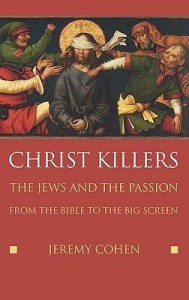 In this book, Cohen explores the origin and evolution of the Christ-killer myth from the first century to the present, focusing his analysis on religious texts, sculptures, paintings, stage plays, and films. The result is a fascinating but sobering study of an idea that has troubled Christian-Jewish relations and contributed to considerable anti-Jewish violence.
In this book, Cohen explores the origin and evolution of the Christ-killer myth from the first century to the present, focusing his analysis on religious texts, sculptures, paintings, stage plays, and films. The result is a fascinating but sobering study of an idea that has troubled Christian-Jewish relations and contributed to considerable anti-Jewish violence.




